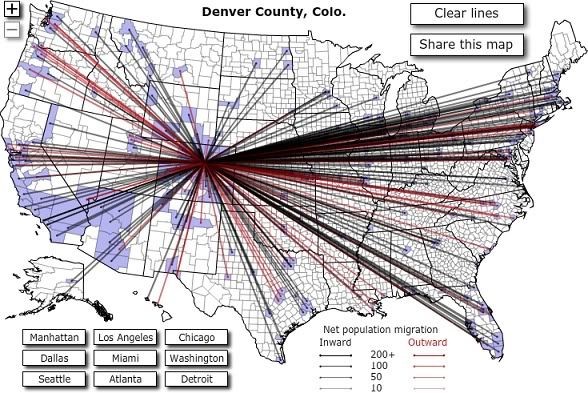
You can see migration to a given county from any other county in the country. E.g., 66 people moved from Dane County, WI (Madison) in 2008, and 34 moved in the opposite direction. Or: 149 people moved from Harris County, TX (Houston) to Queens, NY, but 449 made the opposite trip. Also, this being Forbes, matters economic are considered integral, so per capita income for migrants is also shown. This is pretty interesting, actually, as it is suggestive of the sort of moving involved: the average income for folks making the leap between high-tech hubs San Mateo, CA and Travis County, TX (Austin) was $74,500. For those moving from Cameron County, TX on the Mexican border to Clark County, NV (Las Vegas) it was just $12,900.
